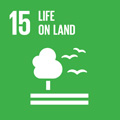- Docente: Sara Kasmaeeyazdi
- Credits: 6
- SSD: ING-IND/28
- Language: English
- Moduli: Francesco Tinti (Modulo 1) Sara Kasmaeeyazdi (Modulo 2)
- Teaching Mode: Traditional lectures (Modulo 1) Traditional lectures (Modulo 2)
- Campus: Bologna
-
Corso:
Second cycle degree programme (LM) in
Environmental Engineering (cod. 8894)
Also valid for Second cycle degree programme (LM) in Geology for Sustainable Development (cod. 6050)
Second cycle degree programme (LM) in Geology and Territory (cod. 9073)
-
from Sep 18, 2024 to Nov 07, 2024
-
from Nov 13, 2024 to Dec 19, 2024
Learning outcomes
The course aims to provide the elements needed to characterize and model a georesource for exploitation and environmental rehabilitation projects.
Course contents
The characterization of raw materials and of environmental variables is based on various activities, among which:
- The definition and selection of areas of raw materials to be exploited;
- The definition of the polluted area;
- The cartography of the spatial and temporal distributions of substances;
- The optimization of sampling.
All the mentioned actions can be quantified by data collection and integration, statistical and spatial analysis of selected data (samples). The target is generally to estimate th values of the variables in absence or scarcity of samples. Geostatistical approaches aim to characterize the spatial, temporal and space-time variability to reach a 3-dimension model or a 2- dimension map. Moreover, each result includes of the uncertainty of the predicted values and subsequently the evaluation of risk, also economic, of conducting the various activities.
Reccommended knowledge
Statistics, probability, geomatics, cartography.
Course contents
Module 1
- Basic review on Probability and Statistics;
- Regionalized Variables;
- Experimental Variogram and Models;
- Recall on traditional estimators;
- Ordinary and Simple Kriging.
Module 2
- Data Regularization and Dispersion;
- Support and Information Effect on Predictions;
- Multivariate Geostatistics;
- Basics of Non-Stationary Geostatistics;
- Cross validation.
The course is completed by a practical project over the characterization of a raw material or an environmental issue.
Readings/Bibliography
- Armstrong M.; Basic Linear Geostatistics, Springer Berlin, Heidelberg, 1998
- Bruno, R.; Raspa G. La pratica della geostatistica lineare: il trattamento dei dati spaziali Guarini Studio, 1994
- Chiles, J.P.; Delfiner, P. Geostatistics Modeling Spatial Uncertainty, 2nd ed.; WILEY: Hoboken, NJ, USA, 2012
- Emery, X.; Séguret S.A. Geostatistics for the Mining Industry, CRC Press, Taylor & Francis Group, 2023
- Journel A.G.; Huijbregts Ch.J. Mining Geostatistics, Blackburn Press, 2003
- Matheron, G. The Theory of Regionalized Variables and Its Application; École Nationale Supérieure des Mines de
Paris: Paris, France, 1971 - Remy, N.; Boucer, A. and Wu J. Applied Geostatistics with SGeMS, Cambridge University press 2009
Teaching methods
The course is made by lectures, with the support of dedicated presentations and real applications.
Specific exercises, also with basics of programming, will train students to develop geostatistical methodologies to solve practical problems.
Moreover, some time will be dedicated to open source softwares, to give students tools for managing large datasets.
Assessment methods
The exam, which will be held in one full day, will be divided in two parts:
- Written part, with questions over the theory and the materials presented during the course (1 hour). Half of the score
- Oral part, based on the discussion over one practical application. (1/2 hour). Half of the score.
Teaching tools
Lessons are based on powerpoint presentations supported by blackboard.
The exercises will be carried out at the Didactic-informatic Laboratory and will propose practical applications with the support of basic programming tools and open source softwares.
Office hours
See the website of Sara Kasmaeeyazdi
See the website of Francesco Tinti
SDGs


This teaching activity contributes to the achievement of the Sustainable Development Goals of the UN 2030 Agenda.
